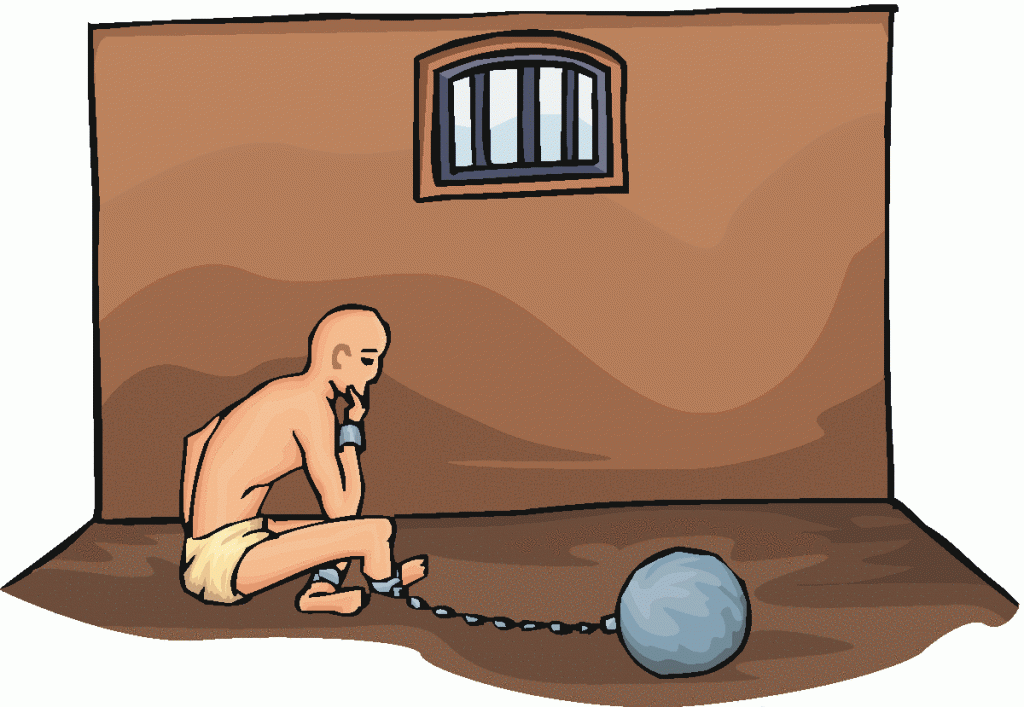Genesis 3:6, Wise. Heb. sakal (Strong’s 7919; TWOT 2263) meaning “to be prudent, be circumspect, wisely understand, prosper.” There is good understanding and bad understanding. For example, too much understanding about something can lead to pride. Similarly, too much understanding about sin and evil can tempt or lure a person into sin. Sometimes it is best not to know certain things to protect one’s innocence and to reduce sin’s allurement. Too much bad understanding can taint our conscience or our spirit man therefore affecting our walk with Elohim. Let the wise man ponder this. The eargate, eyegate and mindgate must be guarded at all times. May we be those who feed from the tree of life rather than the tree of the knowledge of good and evil.
Tag Archives: Genesis
Torah Central—A New Paradigm From Which to View the Bible
The Living and the Written Torah Is the Central Theme of the Bible
The Living and Written Torah is the dominant theme of the Bible. They are one in the same thing—totally unified and absolutely indivisible, which is why I used the singular verb is and not the plural are in the previous sentence. Another way to say this is that whole Bible is about Yeshua the Torah-Word of Elohim who was made flesh (John 1:1, 14).
To illustrate this point, as we shall discuss later, we find this dominant theme prominently highlighted at the beginning, middle and end of the Scriptures.
In this study, we will focus more heavily on the Written Torah, as opposed to Yeshua the Living Torah, although in our minds, without Yeshua, it’s impossible to fully understand, much less obey the Written Torah. Furthermore, it is only Yeshua, the Living Torah and not the Written Torah who is capable of saving us from our sins and giving us eternal life.
The Written Torah Defined
Let’s first define our terms. What does the word Torah mean as defined in the Bible? The primary meaning of the Hebrew word Torah is “teaching, precept, instruction” and not law, although it is translated as such some 219 times in the Tanakh (Old Testament). What is the fuller meaning of the word Torah?
According to Strong’s Expanded Exhaustive Concordance of the Bible, Torah, as already noted, signifies primarily direction, teaching, instruction (Prov 13:14). It is derived from the verb yarah meaning “to project, point out” and hence to point out or teach. The law of Elohim is that which points out or indicates Continue reading
The Sun, Moon, the Feasts and the Saints
Genesis 1:14–16 reveals that the sun is the greater light and the moon is the lesser light. The Bible reveals that the sun is a spiritual metaphor for Yeshua who is the Sun of Righteousness (Mal 4:2), the Light of the World (John 8:12) and whose face shines like the sun (Rev 1:16). The saints, like the moon, are the lesser light that reflects the light of Yeshua into this dark world. One of the ways the saints do this is through observing and teaching about the seven biblical feasts, which are the seven steps of YHVH’s plan of salvation. Seeing the visible new moon is how we determine the beginning of the months and hence the dates of the feasts. In other words, by the light of the moon we determine the feasts. The visible new moon is a visible sign (Heb. owt, Gen 1:14) to point us toward YHVH’s seasons or modem (i.e., the biblical feasts). In the same way, by our reflecting the light of Yeshua and the truth of his feasts into this dark world, we bring the light of the gospel to the world. This analogy breaks down if the month starts when the moon is dark in its conjunction.
Two Messiahs from Two Tribes, One Messiah From Two Tribes … or What?
Genesis 49:24, Shepherd…Stone of Israel. This seems to be an irrefutable prophetic reference to the Messiah of Israel whom Scripture refers to in various places as “the Stone the builders rejected,” “the Chief Cornerstone,” “Precious Cornerstone” and “the Rock of our Salvation” (Ps 118:22; Isa 28:16; Mark 12:10; Eph 2:20; 1 Pet 2:6–8). Yet this verse appears to be saying that this Messiah is coming from the tribe of Joseph. At the same time, Jacob’s prophecy to Judah contains another classic Messianic prophecy in the reference to the Shiloh to come (Gen 49:10). These two prophecies led some Jewish sages to believe that two Messianic figures would arise out of Israel: one from Judah and other from Ephraim.
What kind of blessing was this prediction that one day his descendants—the Ten Tribes—would be scattered among the nations? R. Munk explains: while it is true that the dispersion was caused by the unfaithfulness and sinfulness of Ephraim’s descendants (Hos 7:8ff), Jacob’s blessing was not in vain for “they will return to God” and will have their share in the world to come (Sanhedrin 110b). And R. Eliezer adds: “Even the darkness in which the Ten Tribes were lost will one day become as radiant as the day’ (according to the version of Avos d’Rabbi Nosson 36). And in the perspective of history, did not these exiled children of the Patriarchs enlighten the nations among whom they were scattered? They did so by teaching their conquerors the fundamental ideas of the knowledge and love of God, ideals they had never forsaken. Hence they too have a messianic vocation and their Messiah the. … Messiah son of Joseph (Succah 52a), also called Messiah son of Ephraim (Targum Yonasan on Exod 40:11), will play an essential role in humanity’s redemption, for he will be the precursor of the … Messiah Son of David …” (The ArtScroll Bereishis/Genesis Commentary, pp. 2121–2122).
How do we explain this seeming contradiction in view of the facts that there was only one Messiah, and his name was Yeshua, and he came from the tribe of Judah? These two Messiahs are explained in Yeshua’s two comings. In his first coming, he was like Joseph, a suffering servant who then become a king after enduring great hardships (read Isa 53). When he comes back the second time, he will be like David, the conquering, triumphant or warrior king where he will rule over the world and a united Israel (Rev 19:11–16). The Jewish sages had a concept of these two Messiahs, as well, but were unclear as to whether they would be the same person or not and how much time would separate their two comings. With perfect 20-20 hindsight, we can now ook back and see how Yeshua fulfilled this prophecy as the Messiah Son of Joseph (figuratively speaking) at this first coming, and how he is yet to come as the Messiah Son of David at his second coming where as the Conquering King he will defeat Babylon the Great and establish his earthly millennial kingdom where he will rule as King of kings (Rev 19–20).
The Tribe of Levi: Lemons to Lemonade
Genesis 49:7, I will scatter/divide them. For Simeon, this prophecy was fulfilled in that they had an inheritance both in the area Judah and among the region of northern tribes.
For Levi’s part, his descendants were given the priesthood and were scattered in 48 cities throughout Israel (Num 35:7).
YHVH put this tribe’s passion against evil to good use. Levi’s vengeful anger against Shechem for raping Dinah was excessive and outside the bounds of Torah-law (Gen 38). However, this passion for righteousness and justice became further evident as Levi’s descendants were the ones who stood up against the rebellious Israelites at the golden calf.
Moses used this tribe to execute YHVH’s judgment against the golden calf worshippers (Exod 32:25–29). This time, Levi acted in accordance to and within the bounds of the Torah as prescribed by Moses. For this, they were granted the priesthood and as such, were scattered throughout Israel (in fulfillment of Jacob’s prophecy) to better accomplish their duties. They became responsible for teaching Israel YHVH’s Torah and for acting as judges of the law (Deut 33:10; 24:8; Lev 24:10–11).
The beauty of this story is that YHVH can take the flawed character traits or misguided and even carnal passions of an individual or of a family or a society and redeem them by redirecting them along righteous lines in accordance with Torah principles. Zeal and passion are wonderful character attributes, but they need to be channeled in the right direction.
To the Laodiceans in Revelation YHVH said he would rather they be hot or cold in their passions (Rev 3:15–16). He had no use for lukewarmness, which is apathy. One who is cold or dead is waiting to be awakened spiritually. One who is hot with passion already simply needs direction. One who is lukewarm does even care enough to go one way or the other.
With YHVH Elohim all things are possible. He knows how to take our lemons and turn them into lemonade for his glory! HalleluYAH!
Reunited Israel in Goshen — A Prophetic Picture of the Millennium?
Genesis 46:1–7, The reuniting of Jacobs family — the twelve tribes of Israel. These verses recount the move of Jacob and his family to Egypt where they were reunited with Joseph and his family.
This prophetically foreshadows a time in the future, which the Jewish sages call the final redemption, which is to occur just prior to and at the coming of Messiah Son of David as he comes to establish the Messianic Era (Millennium).
The Jewish sages teach that part of that final redemption includes the reunification of the two houses of Israel (i.e. the Messiah-loving Jews and Torah-loving Christians) into one kingdom under Messiah Son of David. Where do we find this prophesied in the Scriptures? (Read Ezek 37:15–28, which interestingly enough is this week’s Haftorah portion!) This speaks of the family reunification or reconciliation of Judah and Ephraim at Messiah’s return. (Hos 5:15–6:4; 1:11; Acts 3:21; Ezek 37:25). This will be a supernatural work of the Ruach haKodesh (Set-Apart Spirit) of Elohim (Ezek 36:19–32).
After the reunification of the divided family, where did the reunited and reconciled family move to? (Read Gen 46:34.) Goshen was in the Nile River delta area and was, and to this day is, the prime farm land of Egypt. It was a veritable promised land compared to the arid regions of Canaan. Could Goshen be a tiny shadow-picture of the Millennium?
The Jewish sages have a sense that history for the people of Israel is continually repeating itself, over and over again in cyclical patterns as YHVH works his purposes out among his people. He is continually endeavoring to reveal his plan of redemption and reconciliation to those who have eyes to see, and continually reaching out the loving hand of reconciliation to the next generations of Israelites. This is but one more picture of the cyclical pattern of redemption that we see YHVH working out in the pages of Scripture all pointing toward a final climax at the end of the age where all of the children of Israel will worship YHVH in spirit and in truth (John 4:23) under the rulership of King Yeshua the Messiah, Son of Joseph/David.
Joseph: A Young Man Who Didn’t Lose Faith in the Midst of Severe Trials
Genesis 45:5, 7, 8, Elohim sent me. Joseph was sold into slavery at age 17, was freed from prison and made ruler of Egypt at age 30, then seven years of plenty followed, and two years of famine had passed by the time he was reunited with is brothers. Only after 22 years in Egypt did Joseph finally figure out Elohim’s grand and wonderful plan for his life, and how it involved the saving of his family. Had Joseph lost faith along the way, become embittered over his misfortunes, and turned from Elohim, the nation of Israel may have never been preserved. Keeping one’s eyes on Elohim, and refusing to lose faith during the dark times can yield some amazingly triumphant outcomes, as we learn from the life of Joseph.





